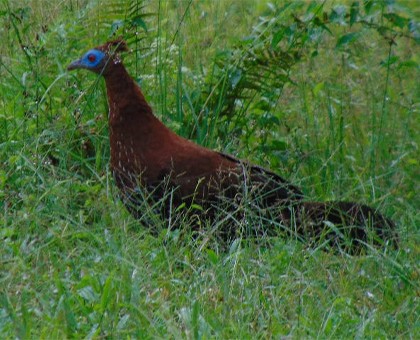19 Feb, 2024
MIMICRY AND MELODY IN THE FOREST
BIODIVERSITY
The white-rumped shama (Copsychus malabaricus), also known as the shama thrush, is a small, but beautiful bird which belongs to the Muscicapidae family. It measures approximately 27 cm in length and boasts eye-catching feathers with a long, trailing tail.
These birds are often found in tropical rainforests, including secondary forests, across South and Southeast Asia. They usually fly through the undergrowth and forage on the forest floor, feeding on creatures like worms and other insects.
Read also: GRACEFUL GREETINGS FROM PACIFIC SWALLOW
The shama thrush is known for its cheerful morning songs, producing melodious and varied tunes with intricate intonations. It can also mimic the calls of other birds and even household noises if exposed to human activities. Beyond just their beauty, their vocal skills have tragically made them targets for songbird enthusiasts. The shama thrush has skyrocketed in value in the world of songbird competitions, which drives its captivity and prevalence in the pet trade.
Read also: PROTECT FORESTS, PROTECT HORNBILLS
Unfortunately, due to overexploitation and habitat loss, the shama thrush population appears to be decreasing, but for now, they are still classified as “Least Concern” according to the International Union for Conservation of Nature (IUCN). The implementation of strict regulations in bird contests, such as prohibiting the use of wild-caught birds and allowing only captive-bred participants, is needed to ensure that the shama thrush does not fall into the Vulnerable category during the next assessment.
Read also: THE ‘WHISKERED’ WONDER OF KEHJE SEWEN
The proliferation of breeders and captive breeding programs has helped meet the demand for these birds, reducing dependence on wild-caught individuals. However, it remains crucial to protect this species and prevent a decline in their wild population.
Text by: PRM Team at Camp Nles Mamse, Kehje Sewen Forest, East Kalimantan





